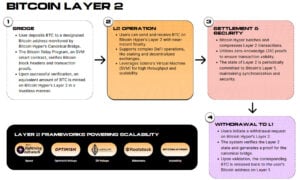TeraWulf Inc. (WULF) stock: Rebound on $500M Convertible Notes Offering Amid Texas Data Center Push
TLDR
- TeraWulf secures $500M to boost sustainable Texas data center project.
- Stock dips as investors weigh TeraWulf’s ambitious funding strategy.
- Convertible notes fuel growth in TeraWulf’s low-carbon compute push.
- $500M raise strengthens TeraWulf’s U.S. infrastructure expansion plans.
- TeraWulf bets on green computing amid volatile market response.
TeraWulf Inc. (Nasdaq: WULF) stock was trading at $15.88, representing a 0.38% surge.
TeraWulf Inc., WULF
The fluctuation followed the company’s private offering of $500 million in convertible senior notes due 2032.
The move to raise capital signals TeraWulf’s push to expand infrastructure while maintaining momentum in its low-carbon computing strategy. The initial market reaction suggests a mixed sentiment as trading volumes spiked during the first hour. The volatility also came amid broader market shifts affecting tech-aligned equities.
Despite the brief recovery, traders continued to monitor how the capital raise may affect balance sheet metrics and future equity dilution. The offering introduces a new financing structure that adds complexity to TeraWulf’s capital stack. Still, the company maintains its focus on long-term infrastructure growth in key U.S. locations.
$500 Million Convertible Notes to Fund Texas Data Center
TeraWulf aims to use proceeds from the offering to support construction of a major data center campus in Abernathy, Texas. The company also plans to allocate part of the funds for broader operational purposes across its U.S.-based platform. The move reflects TeraWulf’s ambition to scale its high-performance compute infrastructure footprint.
The Convertible Notes will mature in 2032 and will not bear regular interest or accrete principal over time. They are senior unsecured obligations, convertible under specific conditions, and may be settled in cash, stock, or a mix of both. The terms, including conversion rate, will be finalized with initial purchasers during the pricing period.
TeraWulf also granted initial purchasers a 13-day option to buy up to an additional $75 million of the notes. This optional extension further strengthens the offering’s flexibility while potentially increasing total available funds. The offering is only available to qualified institutional buyers under Rule 144A of the Securities Act.
TeraWulf Continues Strategic Shift Toward Sustainable Compute Infrastructure
Founded to develop low-carbon digital infrastructure, TeraWulf specializes in data centers designed for bitcoin mining and high-performance computing. The company operates within the U.S. and targets next-generation computing workloads through environmentally responsible platforms. Its leadership brings decades of experience in energy and data infrastructure.
The Texas expansion marks a critical step in its growth trajectory and long-term capacity building. As demand for scalable AI and computing infrastructure grows, TeraWulf positions itself as a key player in the sector. The new facility is expected to boost its total output and operational reach significantly.
While the Convertible Notes introduce new financial instruments, the company remains committed to delivering efficient and sustainable services. The capital raise supports these objectives by ensuring funds are available for large-scale development. TeraWulf continues to execute its strategic roadmap, even amid short-term market fluctuations.
The post TeraWulf Inc. (WULF) stock: Rebound on $500M Convertible Notes Offering Amid Texas Data Center Push appeared first on CoinCentral.
You May Also Like

Mastercard Goes All Into Web3 Via Acquisition of Zerohash for Nearly $2B

Bitcoin Hyper Coin Review 2025 — Is it Safe to Invest in? Everything You Need to Know
